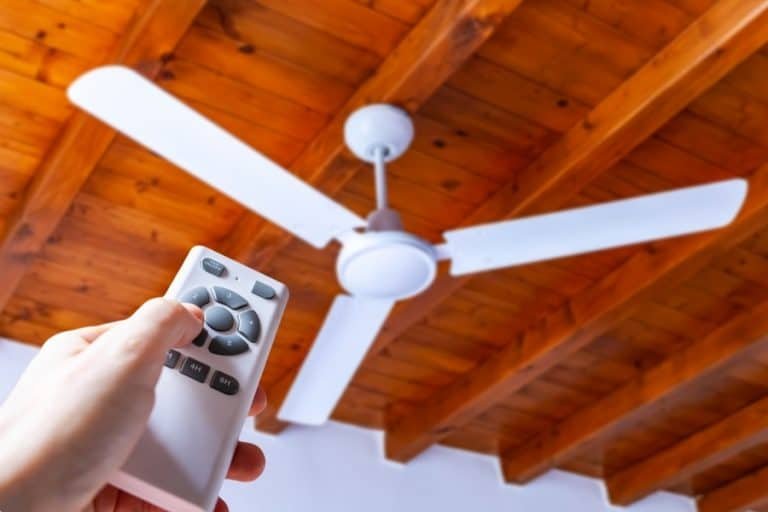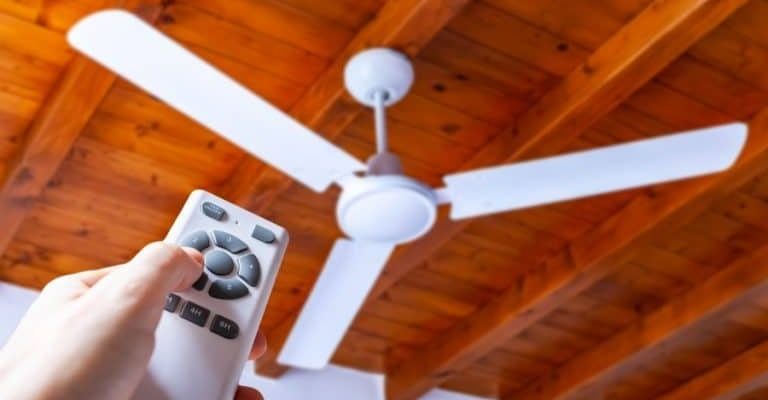
Westinghouse ceiling fan remotes are meant to make life simple. Tap a button, and your fan obeys. But when the remote’s range shrinks or drops out completely, it’s frustrating. A lot of people jump to “the remote’s broken!”—but the actual cause can be sneakier. Maybe it’s the batteries. Maybe there’s interference, or the code inside the unit is off-sync. Sometimes it’s a hiccup in pairing, or the fan just needs a good old reset. Today, we’ll walk through the most common range issues and the best ways to troubleshoot a Westinghouse remote, one beginner-friendly step at a time.
How Westinghouse Ceiling Fan Remotes Work
Before we dig into range problems, let’s get a handle on what’s happening behind the scenes. A Westinghouse ceiling fan remote isn’t all that different from a tiny radio. When you push a button—say, to turn down the speed—it sends a coded signal through the air to the receiver in your fan’s canopy. The receiver “hears” the code and acts on it, like a loyal butler awaiting instructions.
The range, or how far this signal can travel, is affected by a handful of things. Every remote has a maximum range (usually listed in the manual, often 30-50 feet in open air). But honestly, your real-world range can shrink thanks to walls, electrical interference, or even a misaligned receiver. The signal’s a bit like a flashlight beam: it works best line-of-sight, and anything in the way—walls, metal, or even thick curtains—can dull its power.
You might be wondering: is this the same as your TV remote? *Sort of*, but not exactly. Ceiling fan remotes typically use RF (radio frequency), while TV remotes are often IR (infrared). RF can work without pointing directly at the fan, which is great, but it’s also susceptible to interference from other RF devices. Knowing this helps when you’re troubleshooting, because some range issues are common to all RF remotes, not just the Westinghouse brand.
Common Causes of Range Problems With Westinghouse Remotes
Range issues can feel random, but they usually tie back to a handful of root causes. Think of them as suspects in a friendly game of Clue: each deserves a solid alibi—or a closer look.
- Weak or dead batteries can shrink your range dramatically. Even if the remote lights up, low battery voltage can prevent a strong signal from being sent.
- Obstructions—like thick walls, metal ductwork, or even mirrors—can block or reflect the RF signal. Sometimes, simply moving a couch or standing in a different spot makes a difference.
- Receiver placement inside the fan can create its own trouble. If the little black receiver box is jammed next to metal, wires, or tucked deep in the canopy, it might miss signals or shrink its listening range.
- Interference from other wireless devices (think Wi-Fi routers, cordless phones, or smart home gadgets) is sneaky but real. These signals can overlap, leading to dropouts or inconsistent control.
- Remote and receiver sync problems can emerge if the code inside the remote doesn’t match the receiver, or if they lose their “pairing.”
Let me explain with a real-life example: A friend set up a home office with a wireless printer right below their ceiling fan. Suddenly, the fan remote went from superhero to zero, only working when you were right beneath the blades. Turns out, both devices were using similar frequencies and tripping over each other’s signals. Moving the printer solved the issue immediately.
Testing and Replacing the Remote Batteries
Honestly, you’d be surprised how often low batteries are the quiet villain behind remote range troubles. It’s not just about being “dead” or “alive”—batteries can linger in a halfway state, powering the remote’s light but not producing a strong enough output to reach the fan receiver clearly.
Here’s the thing: most Westinghouse remotes use either AA, AAA, or a coin-shaped battery (CR2032). The first thing to try is a simple swap. Slide open the back compartment, pop out the old batteries, and replace them with fresh, brand-name ones. Sometimes, budget batteries can cause headaches, so it’s worth choosing a quality brand.
If you’ve replaced the batteries and still have issues, it’s worth testing the old batteries in another device. If they work fine elsewhere, you might have an issue with the battery contacts inside your remote—those little metal springs that can get dirty, bent, or corroded. Give them a gentle clean with a dry cloth or a pencil eraser. This small step can revive a “dead” remote and solve range problems instantly.
Pro tip: Always install batteries in pairs—never mix old and new. Match polarity (+ and -) correctly to avoid confusion, and double-check the remote’s orientation.
Checking for Interference and Obstructions
Remote range can tank if there’s a lot of electronic “noise” in the area. Think of it like trying to have a conversation at a rock concert—good luck being heard over all that chaos. Some of the worst culprits? Wi-Fi routers, baby monitors, Bluetooth speakers, or even other fans with remotes set to the same code.
Take a look around. Are there a lot of electronics clustered near your ceiling fan? Try temporarily turning off (or unplugging) other devices nearby and test your fan remote again. If things suddenly improve, you’ve found your problem. Sometimes, simply moving a router across the room, or shifting a wireless phone base, makes a massive difference.
Obstructions also matter. RF signals bounce, but not endlessly. If your fan is tucked behind a thick wall, or the receiver is surrounded by metal, range will shrink. Try standing in line-of-sight with the fan and test if the remote works further away. If so, you’ve confirmed a classic “obstacle course” issue.
Not all rooms (or houses) are built equal. High ceilings, lots of ductwork, or heavy insulation can all impact signal range, especially in older homes or apartments.
Re-Syncing or Pairing Your Westinghouse Remote With the Fan
You might be wondering, “What if the remote works, but only sometimes?” That’s a sign your remote and receiver might be slightly out of sync. Westinghouse fan remotes use a set of dip switches or a digital pairing process to “lock” to your particular fan—ensuring your neighbor doesn’t control your living room from next door.
If your model uses dip switches (tiny white toggles under the battery cover), check that they match the switches on the receiver unit in your fan’s canopy. They must be set to the same pattern. If they’re off by even one, the remote may only work sporadically—or not at all.
Some newer Westinghouse fans use a push-button pairing method. You’d need to:
- Turn off the power to the fan (flip the breaker or wall switch).
- Wait 30 seconds, then turn the power back on.
- Within 30 seconds, press and hold the pairing button on your remote until the fan beeps or the light blinks.
This simple code reset often restores full range and reliable control. If you’ve never checked or synced yours, it’s worth a peek. Sometimes, a hard reset (cutting power, waiting, then re-pairing) jolts a “forgetful” remote/receiver combo back to life.
Inspecting and Adjusting the Fan’s Receiver
Here’s where things get a little hands-on. The receiver is the brain inside your fan’s canopy—a little black box that listens for signals and tells the fan what to do. If it’s squashed against metal, wrapped in wires, or loose inside the housing, its ability to “hear” your remote shrinks.
First: always cut power at the breaker before opening the fan’s canopy. Safety first—no exceptions.
Once open, check that the receiver is:
- Firmly connected—wires should be snug, but nothing pinched or frayed.
- Oriented so its antenna (if visible) is pointing straight out, not coiled up tightly against metal.
- Not tucked behind heavy brackets or inside metallic boxes. If it is, gently reposition it for a clearer path to the room below.
Don’t force anything. Just making sure the receiver isn’t blocked or tangled is usually enough. Secure the canopy, restore power, and test your remote’s range again.
If you’re uncomfortable with electrical work, don’t go poking in the canopy—call a qualified electrician or reach out to Westinghouse support.
Resetting the Westinghouse Ceiling Fan Remote and Receiver
Sometimes, both the remote and the receiver need a fresh start. This isn’t as intimidating as it sounds. Think of it like rebooting your phone when apps start acting weird. A simple reset can clear out electronic cobwebs and sort out range problems caused by software glitches.
To reset most Westinghouse remotes:
- Turn off power at the breaker.
- Wait at least 60 seconds for everything to fully power down.
- Turn power back on, and within 30 seconds, press and hold the remote’s main ON/OFF button (or pairing button, if your model has one) for about 10 seconds.
Some fans will beep or flash to confirm the reset. If you have a model with dip switches instead of a push-button, double-check that both the remote and receiver match after power-up.
This process can solve persistent range problems that don’t respond to battery or position fixes. It’s the electronic version of “turn it off and on again”—and yes, it really works more often than you’d think.
Comparing Universal vs. Brand-Specific Remotes
Let me be blunt: universal remotes sound magical (one remote to rule them all!), but in reality, they’re often less reliable for ceiling fan control. Westinghouse ceiling fans, like most brands, are tuned to work best with their own remotes and receivers. If you mix and match—say, using a big-box universal remote—you might get basic functions, but range, pairing, or advanced features (like dimming or multiple speeds) can suffer.
Universal remotes might not perfectly match the codes or sync routines your Westinghouse model needs. They can also struggle with unique frequency bands or security protocols designed to prevent accidental cross-control.
When troubleshooting range issues, always confirm you’re using the dedicated Westinghouse remote that came with your fan. If you’ve lost it or it’s truly dead, consider a genuine replacement over a generic one for best performance—and to avoid hours spent fiddling with codes that almost work, but not quite right.
When to Repair, Replace, or Call for Help
After a few rounds of troubleshooting, you might hit a wall. Here’s how to know it’s time for the next step:
- If a brand-new set of batteries, code reset, and a clear receiver position don’t restore range, the remote itself could be faulty (especially if it’s been dropped, got wet, or has visible damage).
- If range issues started after a power surge or storm, the fan’s receiver might have taken a hit and needs replacement.
- If electrical work isn’t your comfort zone, it’s safer to call a professional—especially when dealing with wiring or opening the canopy.
- If your fan is under warranty, Westinghouse customer support can offer model-specific troubleshooting and replacement options, usually for much less than buying a whole new fan.
One last thing: sometimes, range issues are just a sign that technology is reaching its aged limits. If your fan and remote are a decade old, newer models may offer better range, less interference, and more robust connectivity.
Wrapping Up Your Troubleshooting Journey
Troubleshooting range issues with a Westinghouse ceiling fan remote isn’t magic—it’s methodical. Start with the simple stuff (fresh batteries, visible obstructions), then work your way up to syncing and resetting the code, checking the receiver, and hunting down electronic interference. You might be surprised at how often a tiny tweak or fresh battery brings everything back to normal.
If all else fails, don’t beat yourself up—electronics act up for mysterious reasons, and you’re not alone. Sometimes, just asking for a bit of help or replacing a worn-out remote makes life easier. Soon enough, you’ll be back to zipping your fan off and on from the comfort of your couch—no arm-waving or wild gesturing required.
